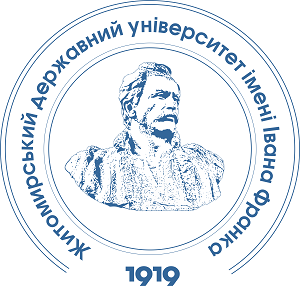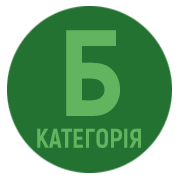AGROECOLOGICAL INDICATORS OF THE FORMATION OF POTENTIAL YIELD OF LENTILS
DOI:
https://doi.org/10.32782/naturaljournal.12.2025.28Keywords:
agroclimatic conditions, photosynthetic productivity, moisture availability, thermal resources, modelAbstract
The article provides an analysis of lentil productivity indicators under various climatic conditions, as well as calculations of different categories of lentil crops using an agroclimatic model of productivity.Before the beginning of the Second World War, Ukraine held a leading position in the world in the cultivation and consumption of lentils. Now the knowledge about this extremely useful ancient culture is partially lost, but agronomists and breeders of Ukraine are returning to the cultivation of lentils in recent years. Due to its unique properties, lentils are called the bean queen.The introduction of legumes into crop rotation allows to reduce the application of mineral fertilizers and pesticides. Lentils are unique in that they are not able to accumulate nitrates and radionuclides, therefore, even grown in polluted areas, they are always an environmentally friendly product. Currently, Ukrainian farmers are paying increased attention to lentils, and this is due to the possibility of its widespread cultivation and high profitability indicators of up to 80–100%. Therefore, work on assessing the possibilities of growing lentils in different regions of Ukraine is relevant.According to the results of calculations, using a dynamic model, a characteristic of the efficiency of lentil cultivation in the Ternopil region was provided. An analysis of the favorable climatic conditions of this region in comparison with the needs of the crop in thermal, water and radiation resources were also conducted, efficiency coefficients and the level of economic use of meteorological and soil conditions were calculated. In addition, agroecological categories of lentil yields were also calculated at different levels of use of radiation resources.The calculations used average medium perennial meteorological and agrometeorological data in the Ternopil region, as well as data from phenological observations of lentil crops, series of average regional lentil yields from 1995 to 2023. Based on the results of the study, recommendations were provided on using the potential of agroclimatic resources to obtain maximum lentil yields.
References
Каленська С.М., Шихман Н.В. Продуктивність сочевиці залежно від мінерального живлення та передпосівної обробки насіння в умовах Правобережного Лісостепу України. Наукові доповіді Національного університету біоресурсів і природокористування України. 2011. № 4 (26). C. 1–8.
Клиша А.І., Кулініч О.О. Вихідний селекційний матеріал сочевиці і новий сорт Лінза. Зрошуване землеробство. 2009. № 51. С. 171–176.
Петкович З.З., Мельниченко Г.В. Нут, сочевиці – перспективні зернобобові культури для вирощування на Півдні України. Зрошуване землеробство : збірник наукових праць. 2016. № 65. С. 102–104.
Польовий А.М. Сільськогосподарська метеорологія : підручник. Одеса : ТЕС, 2012. 612 с.
Польовий А.М. Моделювання гідрометеорологічного режиму та продуктивності агроекосистем : підручник. Одеса : ОДEКУ, 2013. 430 с.
Прокопенко А.Л., Адаменко Т.І. Агрокліматичний довідник по Тернопільський області (1986–2005 рр.). Тернопіль, 2010. 183 с.
Erskine W., Muehlbauer F.J., Sarker A., Sharma B. The lentil: botany, produсtion and uses. CAB International. 2009. 457 p.
Ghanem M.E., Marrou H., Soltani A., Kumar S., Sinclair T.R. Lentil Variation in Phenology and Yield Evaluated with a Model. Agronomy Journal. 2015. Vol. 107. № 6. P. 1–32. https://doi.org/:10.2134/agronj15.0061.
Qi Jing, Boote K.J., Kui Liu, Hoogenboom G., White J.W., Smith W., Jego G., Grant B., Crépeau M., Shang J. et al. Simulating the development and growth of lentil using the CSM-CROPGRO model. Agronomy Journal. 2024. P. 2391–2410. https://doi.org/10.1002/agj2.21654.






